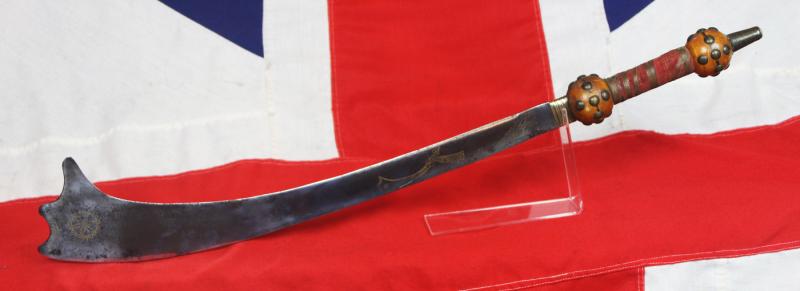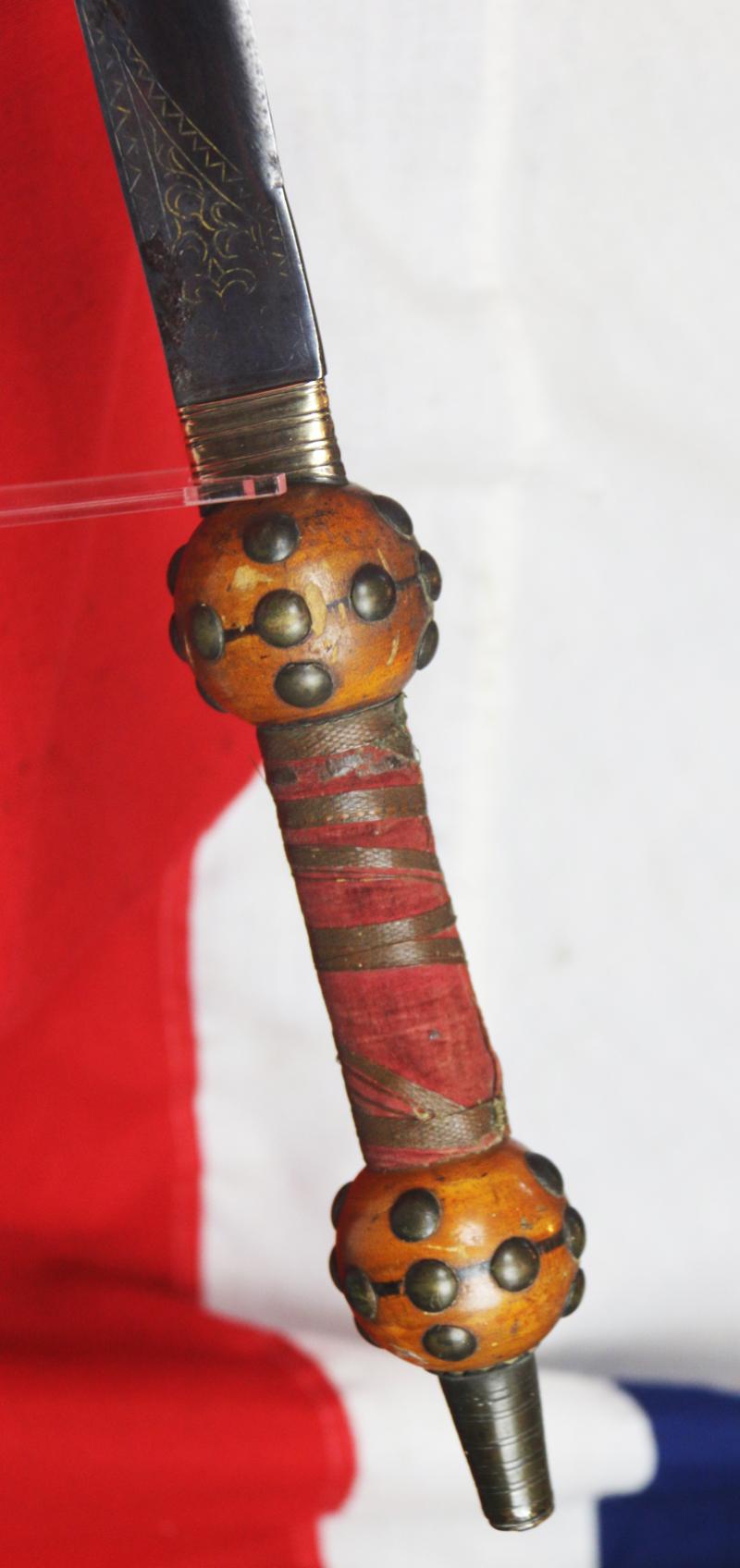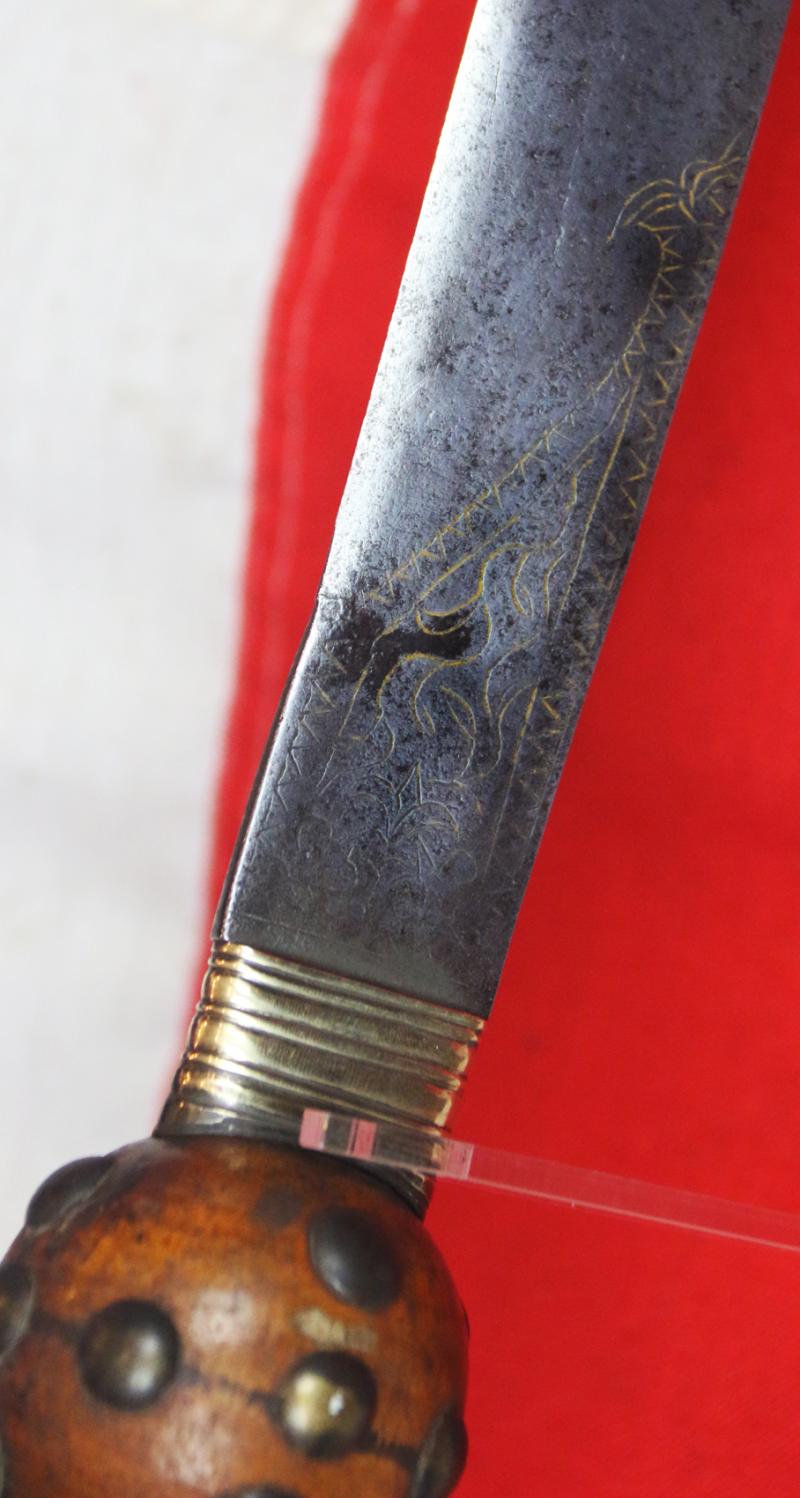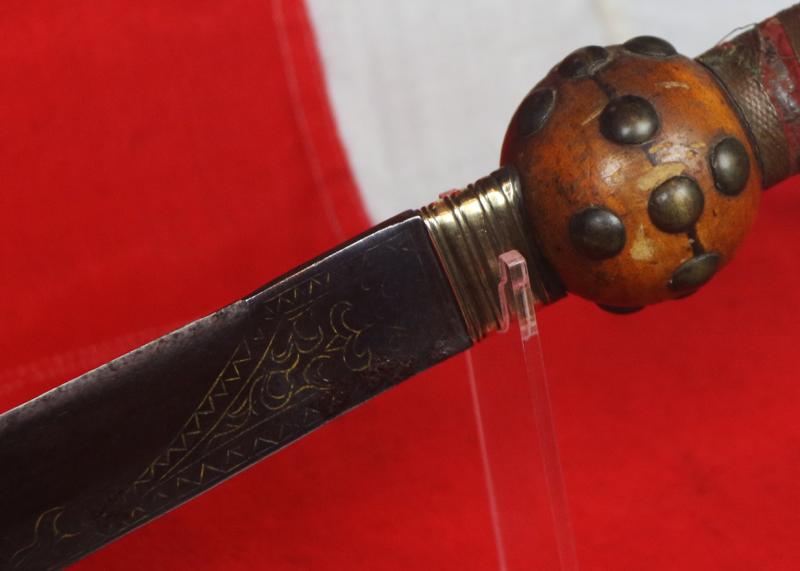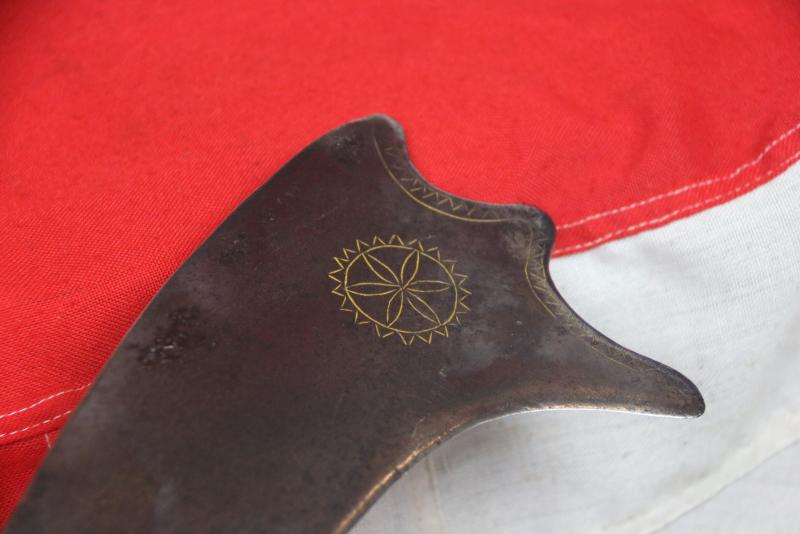A Most Rare 18th-19th Century Nepalese Battle Kora With Highly Unusual Distinctive Flared Gold Inlaid Blade and Inside Cutting Edge and Skull Crusher Pommel
An exceptional example intended for both warfare and sacrifice, the hilt with guard and pommel in the form of flattened spheres, retaining all their original polish. The robust blade of characteristic form, with brass ferrule intact, expanding toward the cusped and obliquely-angled tip and sharpened on the convex edge. Grip retains original velvet fabric covering with silver wire binding applied.
The blade is beautifully engraved, including a sunburst and an armoured arm holding a kora in the hand.
.
The Kora is possibly the oldest form of sword of the Gurkhas and it may well be that their phenomenal military success was largely due to their possession of such a terribly effective weapon." 'Kora,' has an inner cutting edge, with which those who use it skilfully are enabled to cut a foe in two at a single blow." Its appearance reminds of the European Sabre but instead of curving upwards (back) it has a wide tip, a forward curved blade, single edged on its concave side, the latter two characteristic sit shares with the Kukri knife. When used correctly the forward curved blade concentrates the power/energy of the strike to the curved area thus allowing more force to be utilised at the point of contact in each blow. It is designed with its practical application in mind, to chop/slash and not for Classical fencing, yet its usually light enough if the need arises.
Like Nepal, the Kora & Kukri are strongly associated with the Gurkhas and was firstly illustrated in Col. William Kirkpatrick's work "An Account of the kingdom of Nepal” published in London, 1811 based on his travels in 1793 to Nepal. There both the Kukri and Kora is for the first time illustrated to the wider worlds public. The Kora was traditionally used warfare and personal protection, but also played and still plays a function in the religious sphere where it is used to behead sacrificial animals in one blow, otherwise believed to bring bad fortune and the sacrifice is considered useless. Thus both a skilled man and a formidable blade is needed, the Kora certainly passes the criteria!.
Photo 10 in the gallery is of the Bagbhairab Temple, Kirtipur, Kathmandu, Nepal. They are Koras used from the battle of Kirtipur during the 1760`s.
Code: 25517
1100.00 GBP


